Purple pearls are a very rare and highly sought after pearl. Their unique and beautiful color makes them beloved around the world.
- How rare is a purple pearl?
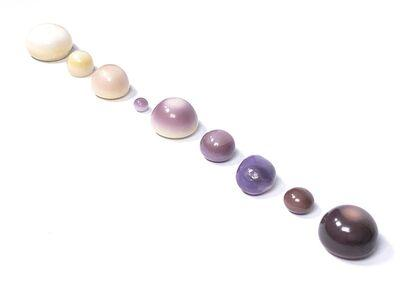
Purple pearls are relatively rare and are highly valued for their unique and beautiful color. Pearls are formed when a foreign object, such as a grain of sand or a small parasite, becomes trapped inside the shell of a mollusk, such as an oyster or a mussel. As a defense mechanism, the mollusk begins to secrete layers of a substance called nacre around the irritant, eventually forming a pearl. The color of a pearl is determined by the type of mollusk it is formed in and the specific conditions in which it is formed, including the type of water, the temperature, and the presence of certain minerals.
Purple pearls are typically formed in the shells of certain types of mollusks that are found in specific locations around the world. They can also be created through a process called pearl culturing, in which a small piece of mantle tissue from a mollusk is implanted into the shell of another mollusk, which then begins to secrete nacre around the tissue. This process allows pearl farmers to create pearls with a range of colors, including purple.
Because purple pearls are relatively rare and difficult to produce, they are generally more expensive than other types of pearls. If you are interested in purchasing a purple pearl, it is important to be aware of the different grades of pearl quality and to do your research before making a purchase.
2. Are purple pearls natural?
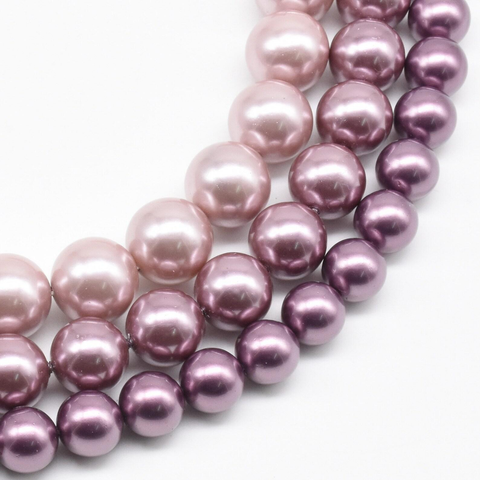
Purple pearls can be found naturally. Purple pearl colors can range from a pale lavender to a deep, rich shade of purple. These pearls are formed in mollusks, such as oysters and mussels, in the same way that other types of pearls are formed. Purple pearls can be found in various types of mollusks and are often found in areas of the world where these mollusks are abundant, such as in the waters of the South Pacific and the Indian Ocean.
The color of a pearl is largely determined by the type of mollusk that produces it and the conditions in which it is grown. Most pearls are white or shades of white, but they can also be found in shades of black, brown, pink, and other colors. Be aware when choosing Purple pearls as they may be artificially dyed. Artificial Purple pearls are typically created through a process called dyeing, in which a pearl is treated with a colorant to change its appearance.
3. Are purple pearls expensive?
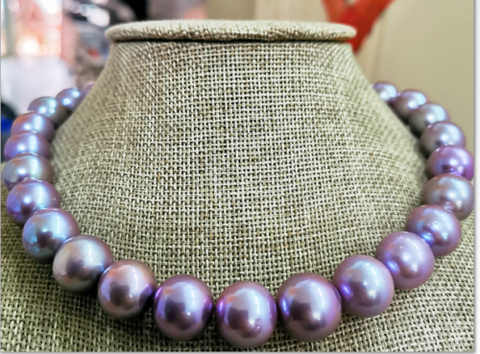
Purple pearls can be expensive, but the price can vary depending on the type of pearl, the quality of the pearl, and the size of the pearl. Some purple pearls, such as those made from purple conch shells, can be more affordable than other types of purple pearls, such as those made from aubergine freshwater mussels. Purple pearls that are larger or have a higher level of luster or iridescence tend to be more valuable and more expensive. It is important to note that many purple pearls on the market are not natural pearls but are instead dyed or treated to achieve their color. These types of pearls may be less expensive than natural purple pearls.
4. How can you tell if a purple pearl is real?
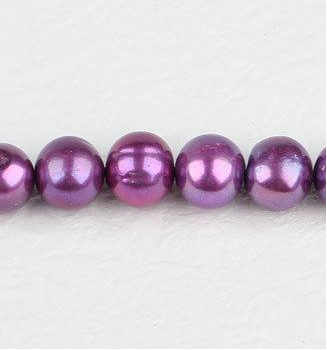
dyed purple pearl
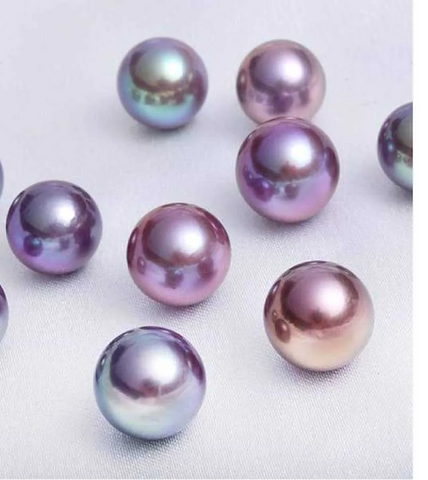
natural purple pearl
There are several ways to determine if a purple pearl is real or not:
Look at the luster: Real pearls have a distinct, iridescent luster that is caused by the reflection, refraction, and scattering of light. If the luster is dull or not present, the pearl may be fake.
Check the surface: Real pearls have a smooth, even surface, while fake pearls often have bumps, ridges, or other imperfections on the surface.
Examine the drill hole: Real pearls are often drilled through the center, and the hole should be smooth and even. Fake pearls may have a rough or uneven drill hole.
Test the weight: Real pearls are denser than fake pearls and will feel heavier for their size.
Check the color: Real pearls come in a wide range of colors, including purple, but the color should be even and not too bright or unnatural-looking.
Perform the tooth test: Rub the pearl against the front of your tooth. Real pearls will feel slightly gritty, while fake pearls will feel smooth.
Consult a professional: If you're still unsure, you can take the pearls to a professional jeweler or gemologist who can determine its authenticity through more advanced methods.
It's important to note that these methods are not foolproof and should be used to get a more accurate assessment of the pearl's authenticity.



